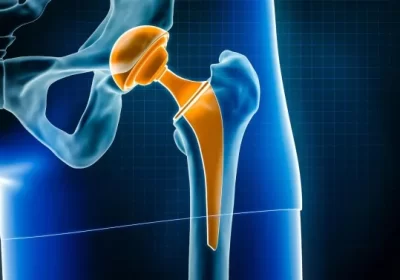The Emotional Toll of Chronic Pain: How to Find Support and Healing
Description
Chronic pain is more than just a physical experience. For millions of people worldwide, it’s an ongoing battle that affects every part of their lives, from their ability to perform daily tasks to their emotional well-being. While much attention is often given to the physical symptoms of chronic pain, it’s important to acknowledge the profound emotional toll it can take on individuals. The persistent discomfort can lead to feelings of helplessness, depression, anxiety, and even isolation. In this article, we’ll explore how chronic pain affects mental health, the emotional challenges it brings, and ways to seek the support and healing necessary to navigate this difficult journey.
Understanding the Emotional Impact of Chronic Pain
Living with chronic pain can lead to a cascade of emotional responses. The constant discomfort and unpredictability can cause significant distress, affecting mood, self-esteem, and overall mental well-being.
Anxiety and Fear
For many individuals, chronic acute pain creates a sense of constant uncertainty. The fear that pain will worsen or become unmanageable can create a heightened state of anxiety. Daily activities may become daunting, with individuals fearing flare-ups or setbacks that could cause them further pain or limit their ability to engage in life as they once did. This anxiety can quickly spiral, leading to more emotional stress and a sense of being trapped in a cycle of discomfort and fear.
Depression and Hopelessness
The isolation and frustration associated with chronic pain often lead to depression. The physical limitations imposed by pain can result in individuals withdrawing from social activities or losing interest in hobbies and interests they once enjoyed. This loss of purpose, combined with a sense of being unable to escape the pain, can result in feelings of hopelessness and despair. Over time, this emotional weight can become just as burdensome as the physical symptoms themselves.
Frustration and Anger
Chronic pain can also stir up feelings of frustration, anger, and resentment. When treatments don’t provide relief, or when loved ones fail to understand the magnitude of the pain, individuals may feel powerless and angry. This frustration can be directed at oneself, loved ones, or even the medical system. As the pain continues to dominate one’s life, it can feel as though nothing is within their control, exacerbating feelings of helplessness.
The Role of Social Support in Managing Chronic Pain
Seeking support is one of the most effective ways to manage the emotional toll of chronic pain. Being open to receiving help from others—whether through family, friends, or support groups—can provide relief and lessen the burden of isolation.
Leaning on Loved Ones
Loved ones can provide much-needed emotional support by listening, offering assistance with daily activities, and simply being there for the individual suffering from chronic pain. While it can be difficult for those who don’t experience chronic pain to fully understand what it’s like, simply having someone who acknowledges your experience and offers empathy can be comforting. Open communication is key, as expressing one’s feelings can help others better understand the emotional impact of the condition.
Joining Support Groups
Connecting with others who are experiencing chronic pain can create a sense of community and reduce feelings of isolation. Support groups—whether in-person or online—offer a space to share experiences, offer advice, and gain reassurance that one is not alone in their struggles. These groups also foster a sense of validation, as members understand firsthand the challenges of living with chronic pain. The shared experiences can also serve as an emotional outlet, providing relief from the burden of constantly holding in one’s pain.
Strategies for Emotional Healing
In addition to social support, there are several strategies that individuals living with chronic pain can adopt to nurture emotional well-being and work toward healing.
Mindfulness and Meditation
Practicing mindfulness and meditation can be powerful tools in managing the emotional toll of chronic pain. These techniques help individuals focus on the present moment, reducing the tendency to dwell on future pain or past discomfort. Mindfulness meditation can reduce anxiety and improve emotional regulation, while also fostering a sense of acceptance. Over time, these practices may help individuals feel more in control of their emotional responses to pain.
Cognitive Behavioral Therapy (CBT)
Cognitive Behavioral Therapy (CBT) is a highly effective approach for managing both chronic pain and its emotional consequences. CBT helps individuals recognize and change negative thought patterns that contribute to stress, anxiety, and depression. For those living with chronic pain, this type of therapy can assist in reframing their perception of pain and reduce the impact of emotional distress. CBT also equips individuals with practical coping skills that help them manage pain more effectively.
Physical Activity and Exercise
While physical activity may seem daunting to those suffering from chronic pain, engaging in regular, low-impact exercise—such as walking, swimming, or yoga—can have significant emotional and physical benefits. Exercise helps release endorphins, which act as natural mood lifters. Additionally, staying active can help prevent the physical deconditioning that often accompanies chronic pain, improving overall function and well-being.
Journaling and Expressive Writing
Writing about one’s experiences, emotions, and struggles can serve as an emotional release for those dealing with chronic pain. Journaling helps process feelings of frustration, sadness, or anger, and allows individuals to reflect on their pain in a constructive way. Expressive writing, in particular, can help individuals gain perspective, cope with difficult emotions, and even foster a sense of hope by documenting progress and personal growth over time.
Finding Healing Beyond the Pain
While pain relief can never be fully erased, emotional healing is possible. The key is to approach healing as a multifaceted journey, where addressing both the emotional and physical aspects of pain is essential. With the right support systems in place—whether through therapy, self-care, or social connections—individuals can learn to navigate life with chronic pain in a way that emphasizes emotional resilience and well-being.
Conclusion
The emotional toll of chronic pain is a real and often overlooked aspect of the condition. Anxiety, depression, and frustration are common among those living with persistent pain, but with the right strategies and support systems, healing is possible. By seeking emotional support from loved ones, joining support groups, and adopting therapeutic practices such as mindfulness and cognitive behavioral therapy, individuals can begin to reclaim their emotional well-being and manage the challenges that chronic pain presents. Healing is not just about alleviating physical discomfort but also about nurturing mental and emotional health along the way.







Leave feedback about this
You must be logged in to post a review.